Overprinted British stamps on stamps
Cyprus
Cyprus was the first to use overprinted GB stamps, on 1st April 1880.
The Cyprus centenary set is unusual in that the original stamps are commemorated by two different postal authorities.
In the Greek administered sector the centenary issue (1980) show three different GB overprints. All three show the stamps “used” on a portion of an envelope; for some reason all of the envelopes appear rather charred round the edges, rather than just “old”.
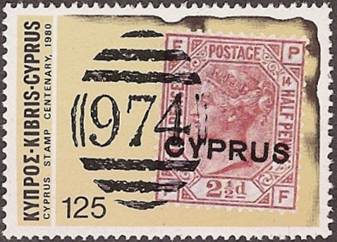

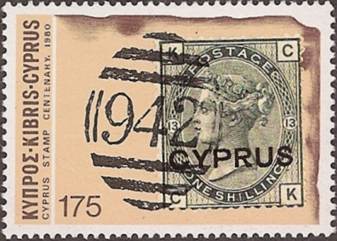
The 40m shows a “Cyprus” overprint on a GB ½d stamp, plate 15 (the commonest plate to receive this overprint). The image includes a facsimile of a numeral postmark of “969” for Nicosia.
The 125m shows the overprint on a GB 2½d stamp, plate 14. Plate 15 also exists. The image includes a facsimile of a numeral postmark of “974” for Kyrenia.
The 175m shows the overprint on a GB 1s stamp plate 13 (the only plate to receive this overprint). The image includes a facsimile of a numeral postmark of “942” for Larnaca.
A miniature sheet was also issued, showing the full mint set.
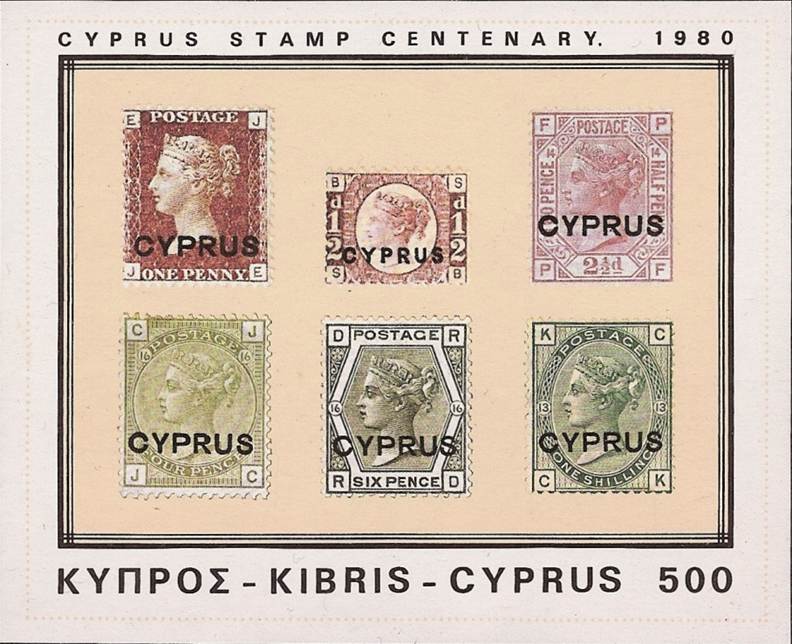

The companion set from the Turkish postal administration includes a 7½ TL value (1980) which depicts another copy of the 6d GB overprint (plate 16), but with different check letters. For some reason this image is stripped of its perforations which makes it look imperforate; it is also in what would be a remarkably pale shade of grey, especially in comparison with the very green-grey of the Greek Cypriot issue.
Bechuanaland
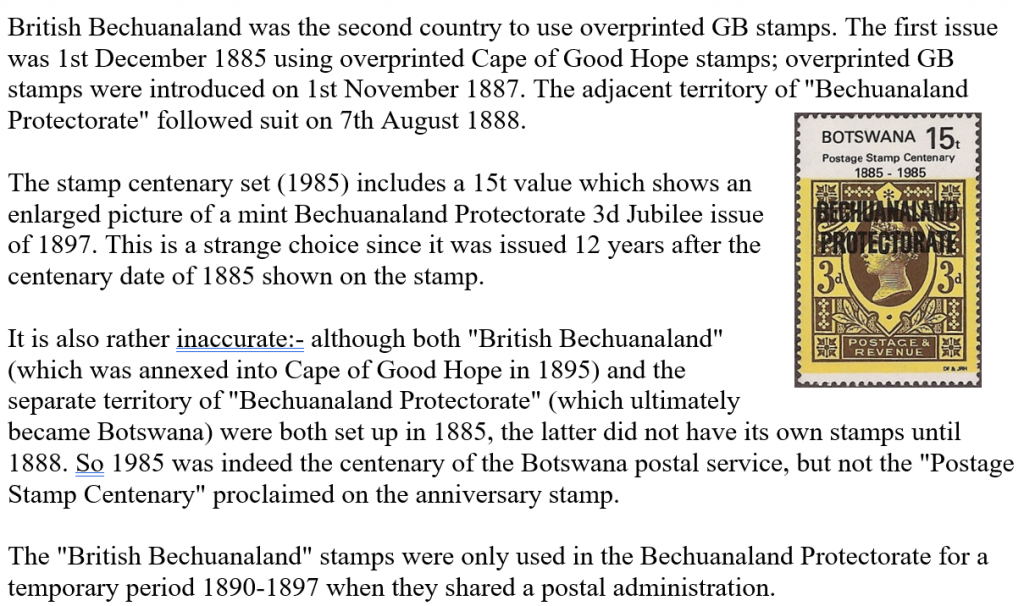
British East Africa
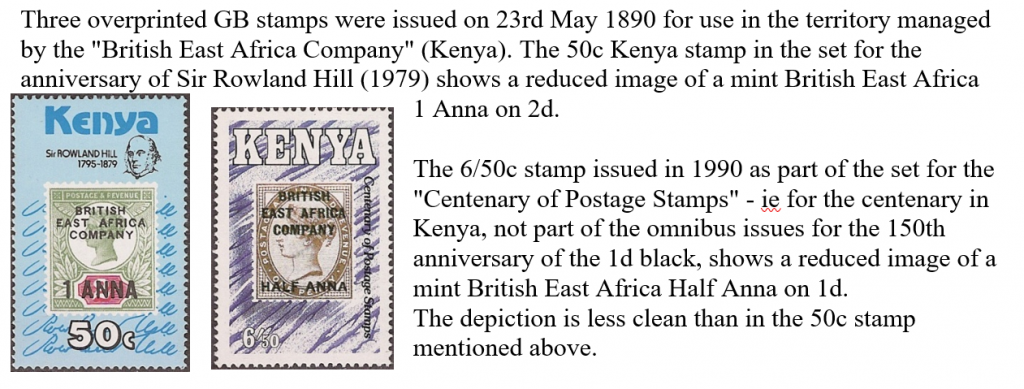
Nauru
The Nauru stamps of 2nd September 1916 are probably the most interesting, possibly because philatelic entrepreneur Ken Lake was their adviser at the time. There are two sets.

The 60th anniversary set shows 6 different overprinted GB stamps. The 10c shows the 3d – allegedly “bluish violet” but in a rather garish lilac-mauve, and the 9d agate. A nice touch is that the 3d shows the “short N” variety. The 15c shows the 6d and the 1s. The 6d shows the “NAUP.U” error. The 25c shows a 2/6d seahorse. The image is somewhat “cleaned up” and reduced; it lacks the ‘broad tooth’ typical of De La Rue, and also lacks the frame dot of the Bradbury Wilkinson stamp. It is probably meant to be the De La Rue stamp, with the perforations tidied up to make it look better. The 50c shows a 5s seahorse with “specimen” overprint. It is presumably the De La Rue printing, the only one issued with a “specimen” overprint. “Progressive coloured proofs” occasionally come on the market.
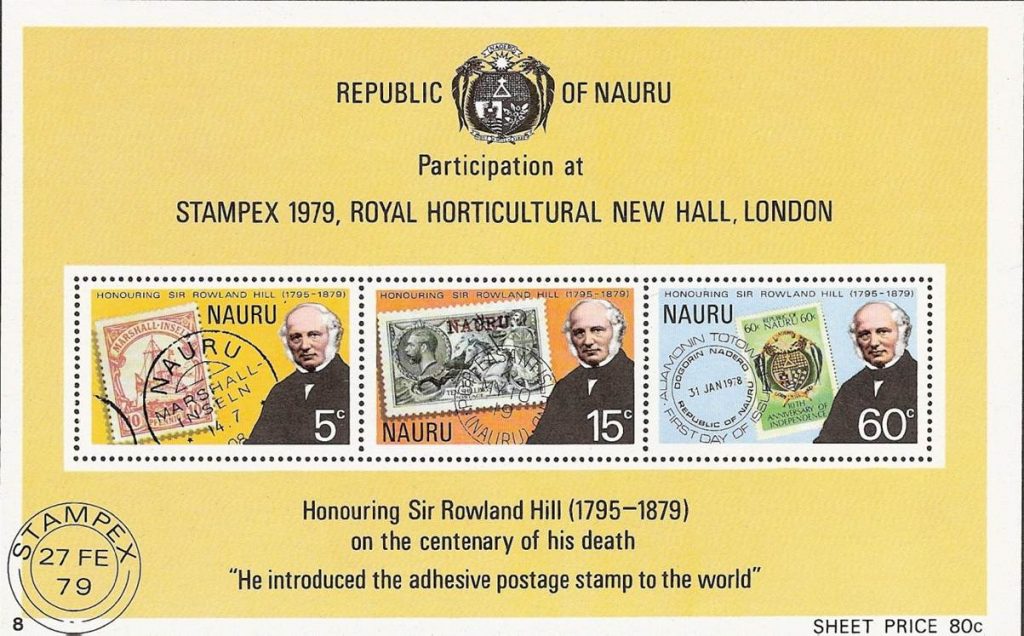
In 1979 Nauru celebrated the centenary of the death of Sir Rowland Hill with a set of 3 and a miniature sheet. The 5c shows a “Marshall Inseln” German colonial stamp, the 60c a modern commemorative, but the 15c (both the single and on the miniature sheet) shows a rather blurred image of a 10s seahorse. The colour is very close to grey, but the “broad tooth” at the top of the sides suggests it is an actual photograph of a De La Rue printing. It also bears a facsimile 1919 postmark “P.O. Pleasant Island (Nauru)”. The miniature sheet also exists imperforate.
Qatar
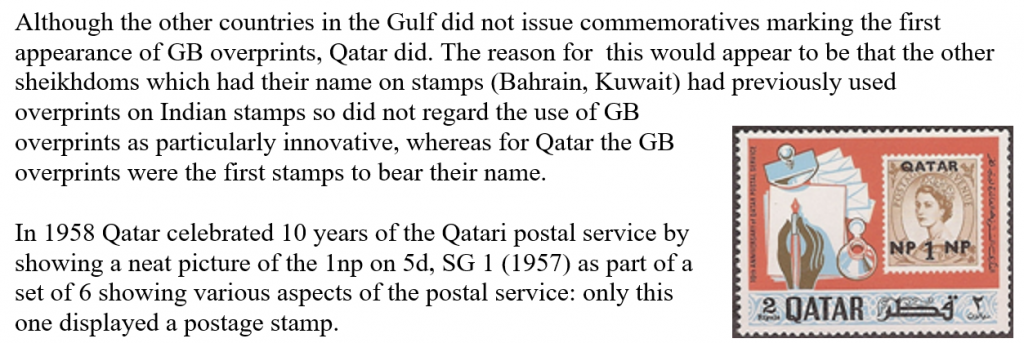
Tristan da Cunha

Other anniversaries
There are no other relevant stamps on issues from the other countries which have used overprinted British stamps:
- the Eire stamp anniversary showed instead the pictorial issue (1922);
- the post offices in the Gulf, Morocco and Levant were British agencies so were not relevant for local commemoratives;
- the Nigeria stamp anniversary set of 1974 showed the preceding stamps of Lagos (1874) and Northern Rhodesia (1900), but not Southern Rhodesia (1901), Oil Rivers (1892; as the Northern Nigeria stamp shown is actually from 1904 it may be representing its 70th anniversary;
- although Zululand was the third country to use overprinted GB stamps, from 1st May 1888, its issues do not figure on any South African stamp anniversary issues; their 1974 centenary of joining the UPU shows stamps from provinces that had stamps at that time, so excludes Zululand;
- the Southern Rhodesia postage due overprints were a temporary arrangement so not relevant for commemorating later;
- anniversary issues would not be appropriate for war time issues of Mafeking and the occupation of Italian colonies.
Commercial and Notarial overprints
Applying a private overprint to postage stamps renders them invalid for postage. In the case of stamps needed for postal use companies often apply a “perfin”, which does not compromise the stamp’s postal validity. This prevents petty theft, especially in earlier times when unused stamps could be taken back to the post office and exchanged for a cash refund. However, many companies had to issue receipts, and until decimalisation an excise duty was levied on each one (1d, from 1920 2d). To prevent pilfering of their stamp stocks needed for attaching to receipts companies were allowed to apply a company overprint, since the stamps were not intended for postal use. Similarly in legal offices taxes due on some transations were recognised by affixing a stamp (6d or more), again sometimes protected by a company overprint. Companies which used coils to deliver stamps to their counter staff sometimes used those with sideways watermark, and some issues (eg the King George V 2d photogravure stamp) are relatively easily found like this.
These private commercial security overprints are a fascinating area for collection, but are outside the scope of this site.
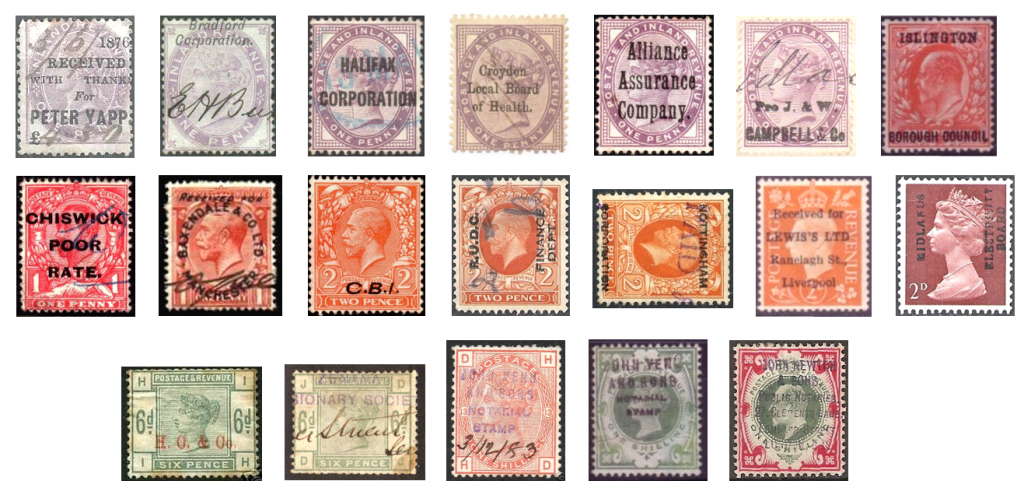
When excise duty on receipts was abolished as part of British decimalisation in 1971, the GPO permitted companies who had already overprinted 2d stamps to use them for postage, so they can be found legitimately postally used.
More information can be found on the website of the Commercial Overprint Society of Great Britain (COSGB) http://www.cosgb.org
School Specimens
Many stamps have appeared on the market having been used in one of the Post Office’s training schools. Collectors should note that any such material has inevitably been taken without authorisation from the training school, and is therefore stolen property, which can render the owner liable to prosecution.
The postal items used in the Training Schools are defaced to prevent theft, either by overprinting “SCHOOL SPECIMEN”, or by applying one or more black bars with an ink roller. Unfortunately some dealers have found it an attractive opportunity to apply their own versions of these as a means of selling surplus mint stamps. Material used in the training schools was used primarily on covers with particular postal needs (registration, express, postage due etc) to instruct trainees on the calculation of postal charges. They did not receive specific training on how to apply a counter stamp, so covers ostensibly from some training school bearing random postmarked stamps are bogus, prepared by some private person with a made-up handstamp; these are without value.
Sometimes the postal trainees used defaced waste sheets from the printers, and copies are known of black bars on tête-bêche pairs (from misprinted booklet sheets) or imperforate stamps not otherwise known in this condition.
Propaganda overprints
Nazi

| GBOS № | (SG №) | denomination | colour | date of issue | number issued |
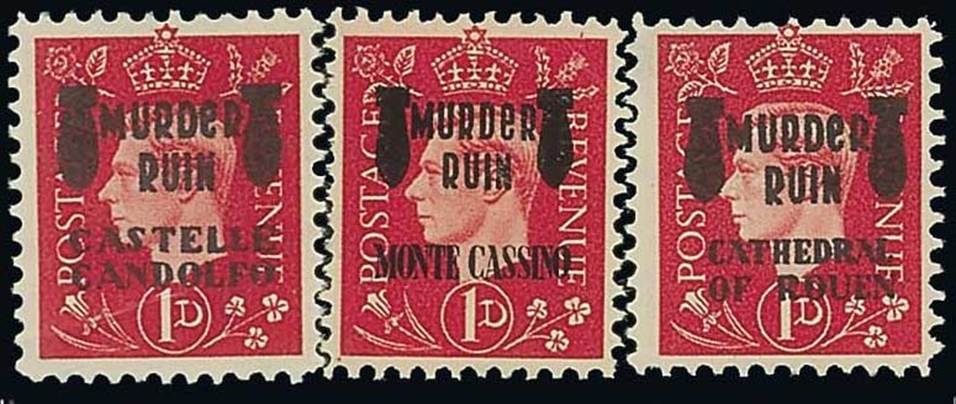
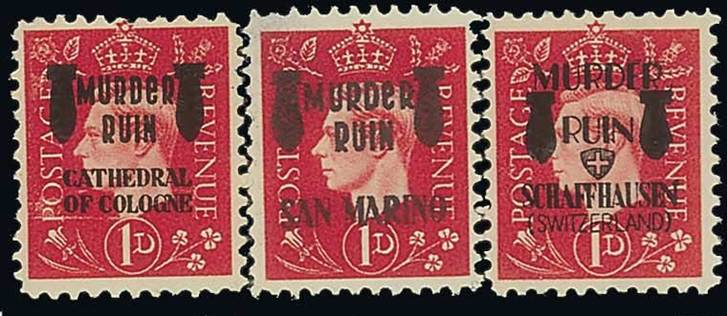

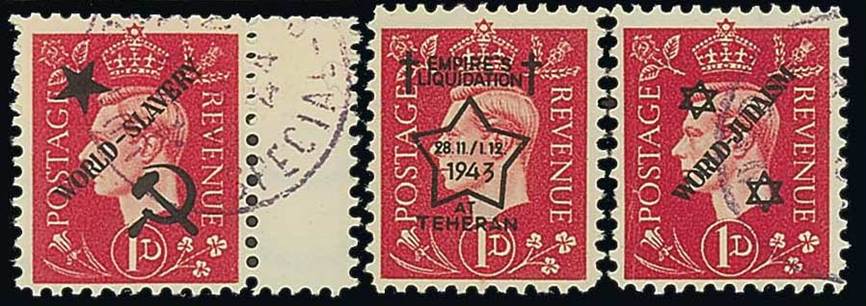
| GBOS № | (SG №) | denomination | colour | date of issue | number issued |
Fantasies
Tristan
Cachets, not overprints, notwithstanding the Tristan “stamp on stamp” in section 28.
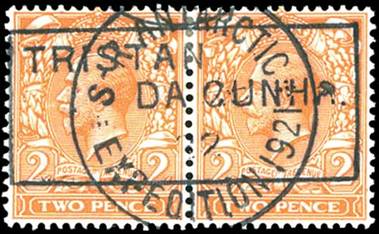
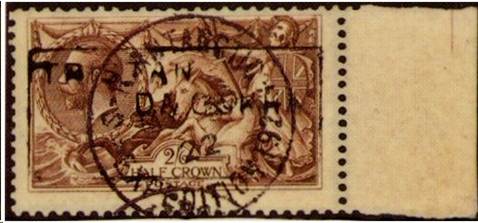
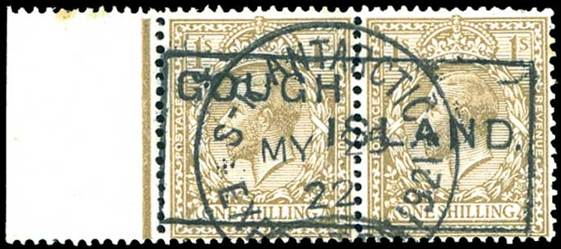
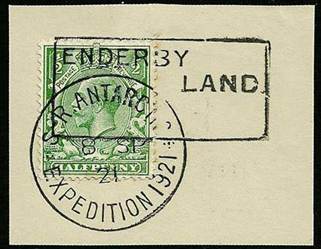
Silver Jubilee
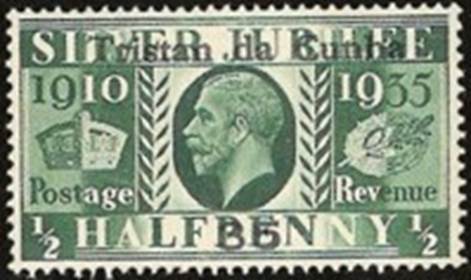
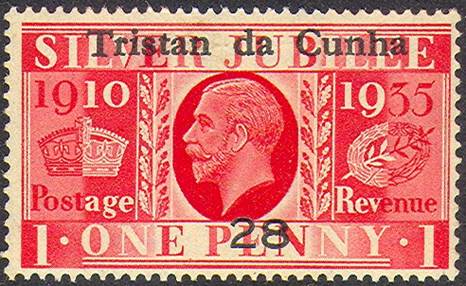
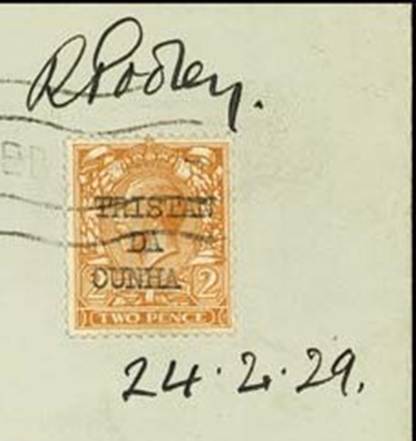
MAP
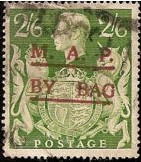
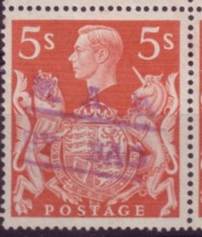
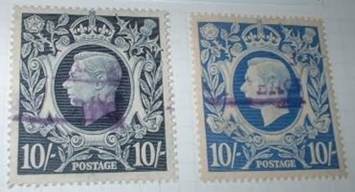
Mafia Is
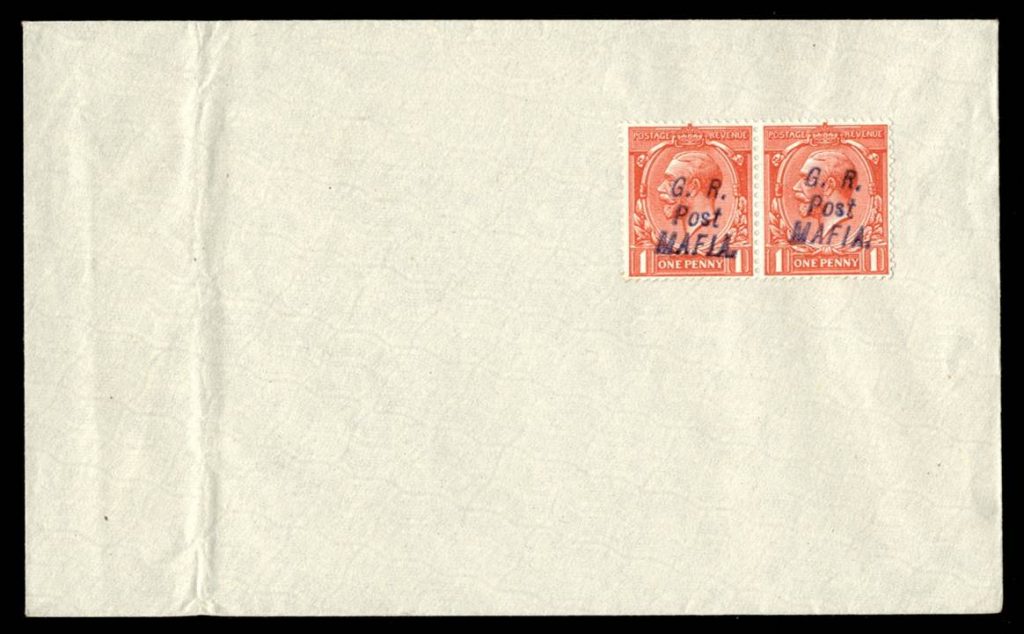
Courtesy of Grosvenor
By favour for George J King, using genuine handstamp.
Republic of Somaliland
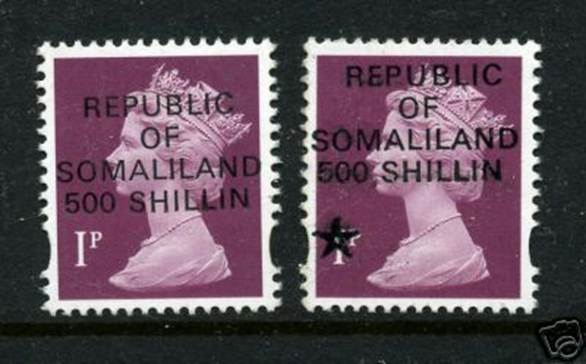
Trucial States



War Tax and VV
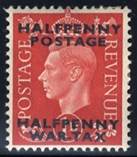
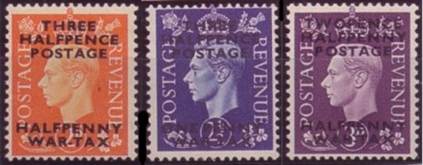

Official essays

(courtesy of Andrew Lajer; other essays in BPMA)
And the rest…
Creating unlikely or even outlandish overprints on British stamps seems to be something of a cottage industry for anybody with a home printing kit, or even just a pen. No comments are offered on this selection, which speaks for itself.
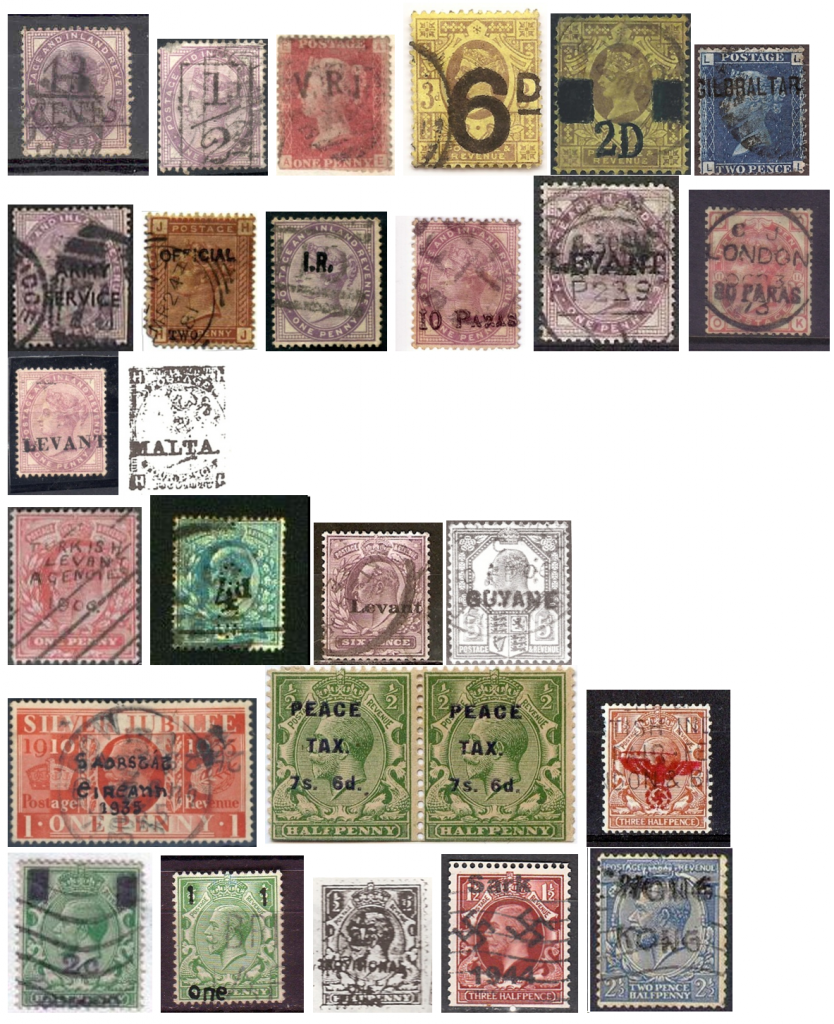

References specific to this and related chapters
GBOS GB Overprints Compendium edition 8, Dr John Gledhill (12/4/2020)
Particular thanks go to Stanley Gibbons Ltd, for permission to quote their catalogue numbers and numerous other contributors who are mentioned in the Appendix section.
All content is copyright, Dr John Gledhill and the GB Overprints Society, May 2025.
